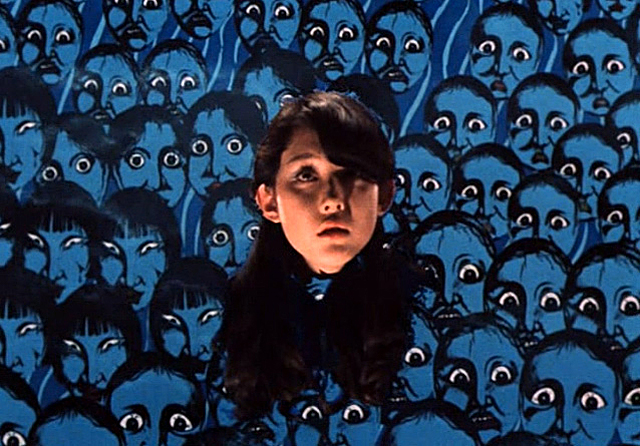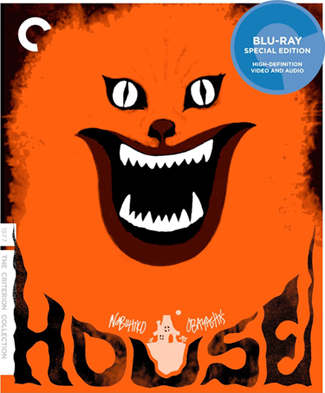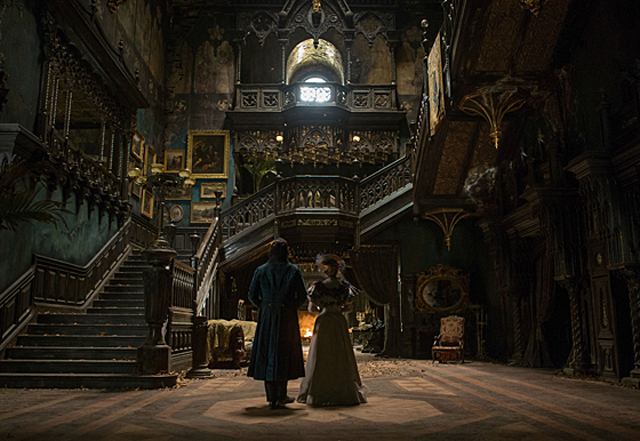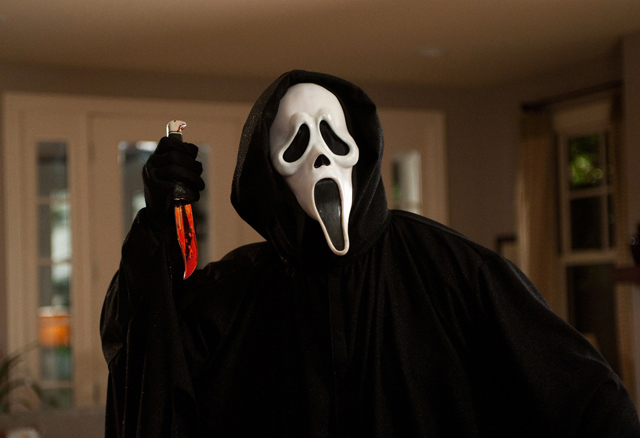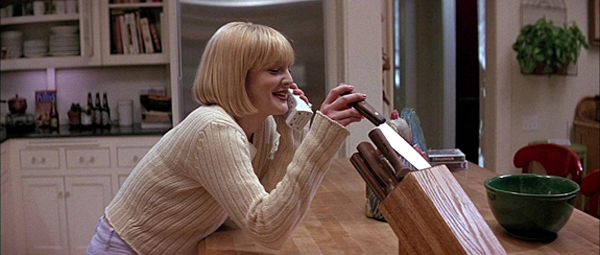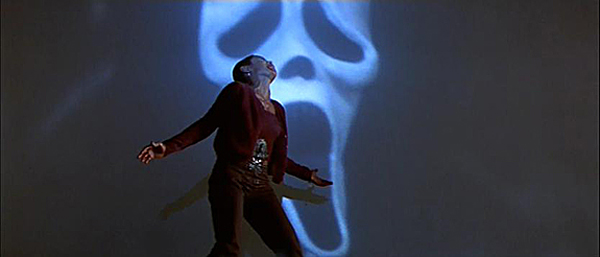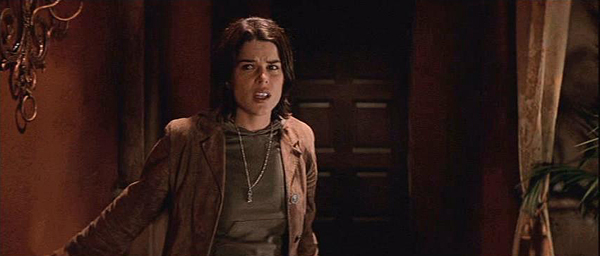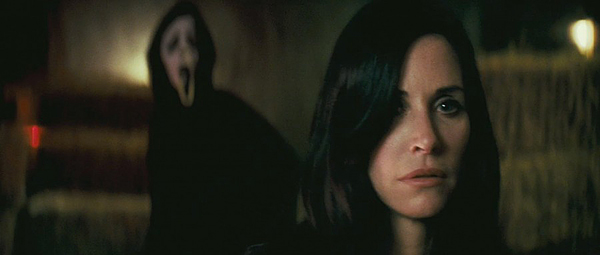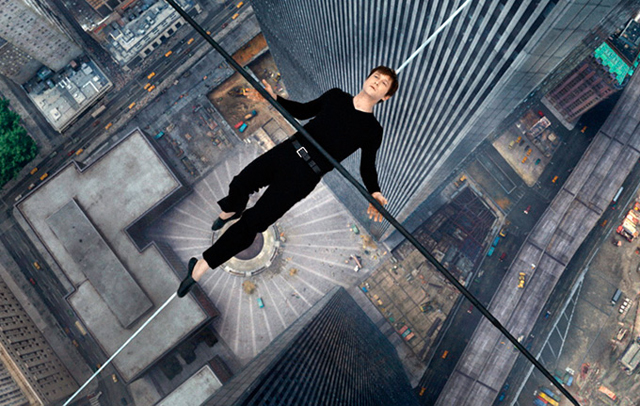Earlier this year I shared with all of you a top ten list of my favorite epic musical themes of all time. Beyond each of them being my favorite movie tunes to listen to, the other thing they usually had in common was that they were associated mostly with the heroes of their selective movies. Whether it was the moody Batman theme from Danny Elfman or the triumphant “Throne Room” theme from John Williams in Star Wars, there’s no doubt that some of the most beautiful music ever written have usually been reserved for heroes. But, not all memorable themes are written just for them. Sometimes a villain’s theme may be even more beloved in a movie than the hero theme, or can even be the main musical tune of the film itself; such as Bernard Herrman’s haunting Psycho theme. Though hero and villain themes usually serve the same purpose in telling a story, they are characteristically very different, and it’s that contrast that really helps to make the villain themes much more memorable. Usually they are sinister, aggressive, or just plain foreboding, and yet we can’t help but love hearing them. Hollywood has provided just as many memorable villain themes as they have memorable villains, and you can’t help but love the way that many composers have fun trying new things as they delve into the dark side with their music.
Given that it’s Halloween, I have decided to list a few of my own favorite villain themes, since they can make an enjoyable playlist for the holiday. Keep in mind, these are my own choices based on how much I enjoy them personally, as well as how I judge them by their significance in the history of cinematic music. These are all purely orchestral themes, and not villain songs. That’s a whole other category that I might cover someday; more than likely dedicated almost exclusively to Disney villain songs, since they’re so good at them. This list may not be everyone’s choices, and some of you may be surprised by a few of my picks. I just hope that a few of you might discover an unexpected surprise here, alongside some of the more obvious choices. In addition, I’ll detail exactly why I chose these movies, and include the musical pieces themselves in video form. Overall, my picks reflect the effectiveness that the themes embody each villain’s character, as well as stand on it’s own as just an overall great tune. Sometimes, even minor villains might have a great theme or a great villain can have a forgettable theme. And if both end up being great at the same time, all the better. So, it’s time we begin this monster mash of music as we countdown my favorite villain musical themes of all time.
10.
GOZER THEME from GHOSTBUSTERS (1984)
Composed by Elmer Bernstein
First off we start with an effectively spooky theme heard in one of the greatest comedies ever made. Ghostbusters is an interesting movie because even though it plays it’s premise for laughs, it’s also not afraid of throwing some really scary images at it’s audience. Amazingly, the movie is able to balance the comical and the creepy perfectly and a large part of that is due to the excellent musical score written by the legendary Elmer Bernstein. Bernstein had one of the most prolific careers in Hollywood as a composer, writing for a wide variety of projects that ranged from the grandiose epic The Ten Commandments (1956) to the intimate social drama To Kill a Mockingbird (1962), and he managed to brilliantly capture the right mood for each project. His later career had him writing for action films and comedies, which made him a perfect choice here. Bernstein’s whole score for Ghostbusters is wonderfully spooky in a playful way (making particularly good use of classic horror movie music elements like the theramin), but if there was a standout, it would be the theme for the movie’s sinister, Sumerian God villain, Gozer the Destructor. The theme plays throughout the film to great effect, building up to the arrival of Gozer at the film’s climax, helping to establish the overwhelming threat that the villain holds for our lovable band of quirky heroes as they face off against an enemy of Biblical proportions. It only makes sense that a composer of biblical epics would find just the right sound for such a vengeful, destructive force in this classic comedy.
9.
MAGNETO THEME from X-MEN: FIRST CLASS (2011)
Composed by Henry Jackman
Here we have a relatively new villain theme, but one that is nevertheless memorable. Magneto is one of the more fascinating villains to have ever come out of the world of comic books. His tactics are harsh and unforgiving, but his motivations come out of a tragic past; one which helps to make him far more sympathetic. He’s a perfect example of someone who is not born a villain but is turned into one. This aspect was explored perfectly in the Matthew Vaughn directed X-Men: First Class. We watch as the mutant Magneto is shaped by his circumstances to become crueler and harsher until ultimately he becomes the unforgiving villain that will forever undermine the good deeds done by the heroic X-Men. Henry Jackman’s score for the movie primarily tries to emulate the sound of the era in which the movie takes place, which is the 1960’s. All the other music in the movie fits this motif, except this very modern sounding piece, and I think that it was intentional. It plays at the very end when Magneto (played brilliantly by Michael Fassbender) makes his first appearance as his newly minted villainous persona, which underlines the idea that this is the birth of a new evil in the world and helps to give us an idea of the mayhem he will bring. It’s thematically perfect, but also great to listen to. It only makes sense that a villain with the power to control magnetism would have a theme that’s so, well, metal. I just enjoy the energy this theme brings. It’s dark, sinister, and perfectly embodies the state of mind of such a dark and conflicted character.
8.
THE WICKED WITCH OF THE WEST THEME from THE WIZARD OF OZ (1939)
Composed by Herbert Stothart
This is one of the most legendary villain themes to come out of Hollywood. In the early days of cinema, especially during the silent era, villain themes would often use popular classical music that tended to have a macbre edge to them. One example of this was Bach’s Toccata Fugue in D Minor in Tod Browning’s Dracula (1931), which was a suitable theme for the legendary bloodsucker. Original themes became more prevalent in the early sound era, and one of the greatest scores to come from this time was The Wizard of Oz. Known primarily for it’s songs, The Wizard of Oz also had some orchestral themes that brilliantly underscored the movie, none more so than this villain theme. The Wicked Witch (played memorably by Margaret Hamilton) is the only main character who doesn’t have a song in the movie, and that’s because she doesn’t need one. This theme perfectly characterizes the dastardly witch; a swirling cacophony of music not unlike the twister that brings Dorothy to Oz. I also like how it instantly establishes itself in the movie from the very beginning, as it’s first heard when the sinister Miss Gulch (also played by Hamilton) enters the movie. Using it for this effect helps to signify for the audience that danger is approaching and whoever follows with it is up to no good. It’s a great effective way of differentiating the villain from the rest of the cast, with her menacing sounding theme, and this particular piece of music has been a highly influential one over the years. Many villain themes since have taken their cue from the Witch’s example and it’s still a memorable piece of music to this day.
7.
GODFREY THEME from ROBIN HOOD (2010)
Composed by Marc Streitenfeld
Here we have an example of a great musical theme written for a very bland and forgettable villain. The Robin Hood adaptation from Ridley Scott has a lot of problems, but the musical score by Marc Streitenfeld is not one of them. In fact, the music is the best thing about it, and this villain theme is the clear highlight. Sir Godfrey is the film’s stand-in for the Robin Hood’s legend’s main antagonist Sir Guy of Gisbourne, and though he’s played by a fantastic actor (Mark Strong) he is largely forgettable and stock standard as far as villains go. And yet, Streitenfeld felt that a grandiose villain theme was needed here. Though let down by the underwritten character in the movie, I’m certainly glad that Streitenfeld went above and beyond with his theme. It’s an effectively creepy musical piece that would be better suited in a monster movie than in the legend of Robin Hood. I especially like the pulsing use of the flutes and how they play alongside the heavy percussion that follows. It’s the kind of music that crawls under your skin in an unpleasent way. I remember first hearing this music when I saw the movie in theaters a while back and was struck by how much this theme instantly defined itself. I’m sure that many of you probably have never heard this one before, so my hope is that this will be a surprise to you. In my opinion, great pieces of music can come from even the lamest of movies, and this is a perfect example of that. It does what all the best villain themes should do and that’s to give it’s character an instant identity. I just wish the character hadn’t been such a wet blanket throughout the film. Hopefully, heard apart from the film, I’ve helped to highlight this great sinister piece that I feel hasn’t been given it’s due yet. It’s a chilling piece of music that deserved a much better villain and a far better movie.
6.
THE KRAKEN THEME from PIRATES OF THE CARIBBEAN: DEAD MAN’S CHEST (2006)
Composed by Hans Zimmer
Han Zimmer’s scores for the Pirates of the Caribbean series are just as wild as the films themselves. Mixing a lot of different types of styles together, from classical to heavy metal, his music is a perfect accompaniment for this unconventional series. Naturally people remember the main theme the most, but Zimmer also wrote some memorable scores for the villains in the series. The main antagonist, Davy Jones gets his own melancholy villain theme that is powerfully centered around the pipe organ instrument. But, I would say that the more memorable villain theme in the movie belongs to Davy Jones’ loyal “pet;” the monstrous Kraken. This musical piece is as wild as the monster it underscores. We’ve heard many themes used in movies that effectively characterize the dangers of what lies out in the open ocean, but none have sounded as ferocious as this one. When first seen in action the movie, the Kraken rips apart a full sized galleon ship and the music effectively reflects that epic scale savagery. But, what I like best about this theme is that when heard outside of the context of the film, it does stands on it’s own as a great piece of music. It’s the kind of villain theme that paints a picture all on it’s own, and it’s a brutal and frightening one at that. I certainly think it’s one of Hans Zimmer’s best because of that and absolutely one of the best villain themes of all time. You just can’t overlook a beast like this.
5.
JAWS THEME from JAWS (1975)
Composed by John Williams
And speaking of beasts from the depths of the ocean, here’s the granddaddy of them all. The main theme from Jaws could very well be the most famous two notes in all of music. The moment you hear those bass strings play those notes, you instantly know what you’re in for. Fun fact: when John Williams first played this theme for director Steven Spielberg back during the film’s development, Spielberg thought it was a joke. But, as the famed director soon learned, the theme based on those two notes would not only be perfect for the movie, but also a life saver as well. Spielberg was plagued with production problems throughout filming with a mechanical great white shark that never worked properly, and he was forced to edit around the creature, merely implying the villainous monster’s presence through most of the movie. That’s where Williams’ score came to the rescue. Even though the audience doesn’t see the shark, the music helps us to know that it’s coming with it’s countdown clock-like immediacy. I don’t think there has ever been a better piece of music ever written to convey that sense of creeping doom. Once the shark finally makes his appearance, we’re already prepared to fear it, and that’s a testament to the overall effectiveness of Williams’ theme. What I also like is the way that the music reinforces the merciless nature of the beast; as the beat grows louder and louder like it’s catching up to you and when it crescendos, that’s when you know that the monster has hit it’s mark. It’s a brilliant villain theme that belongs to one of cinema’s most unforgettable monsters, and John Williams’ managed to do it with a melody based purely on just two notes.
4.
MAIN THEME from BRAM STOKER’S DRACULA (1992)
Composed by Wojciech Kilar
Naturally, a Halloween icon such as Dracula should get a memorable theme of his own, but it wasn’t until Francis Ford Coppola’s 1992 adaptation of the Bram Stoker novel that we got a musical theme worthy of the Count. The classic Bela Lugosi Dracula films were mostly silent with only classical pieces used sparingly like the already mentioned Toccata Fugue. Many of the subsequent Dracula adaptations also played on that same silent terror over the years. But Coppola’s feature was meant to be epic and operatic, and he called upon Polish composer Wojciech Kilar to give Dracula a truly memorable theme. And that he did. This is a wonderfully creepy piece of music, and grandiose in all the right ways. The constant drumming beat creates a nice sense of rising tension and each movement adds more and more instruments to the mix, helping to build to a sinister cacophony of sound, sort of like a sinister version of Ravel’s Bolero suite. The piece is perfectly suited for Coppola’s twisted retelling of the Dracula legend, and it gives it the right amount of epic grandeur that helps to set it apart from other versions of the story. Of all the themes on this list, this is the one that really feels at home in this Halloween season, giving the listener a true sense of feeling like something monstrous is on it’s way. It’s the type of music you can imagine playing in the background of a haunted house tour. But the best thing about it is that it gave the iconic Dracula a worthy musical theme that he was sorely lacking.
3.
ISENGARD THEME from THE LORD OF THE RINGS: THE FELLOWSHIP OF THE RING (2001)
Composed by Howard Shore
Howard Shore’s multiple Oscar-winning scores from the Lord of the Rings trilogy feature many memorable and now iconic musical themes. Most of them are tied to the many different cultures an peoples of Middle Earth, giving the series a deep sense of history as Tolkein’s world is brought to life. Shore also gave specific characters their own memorable themes, the best of which belong to the trilogy’s many memorable villains. Each villain’s theme is great in their own right, including the delirious “Barad-dur” theme for the main villain Sauron, the twisted “Minas Morgul” theme for the Witch King, as well as the melancholy one for Gollum. Why, even the Ring of Power itself gets it’s own villain theme. But, if I had to pick the best villain theme out of the bunch, it would be the one that belongs to the white wizard, Saruman. This is far and away the most memorable villain theme from the series and one of my absolute favorites as well. It perfectly reflects the persona of the villainous Saruman, which as the character Treebeard states in The Two Towers (2002) is now “a mind of metal.” Howard Shore took many industrial sounding instruments and incorporated them into his theme, which helps to underscore the scenes within the mines of Isengard perfectly. Not only does it convey the industrial theme perfectly, but it also sounds menacing at the same time. This was a perfect sounding theme to associate with the wizard, and it couldn’t have been better suited for a physically imposing actor like the late, great Christopher Lee who played the role. Of all the great music in Howard Shore’s epic scores, this is a real standout, and that’s saying something.
2.
WALTZ TO THE DEATH (THE JOKER THEME) from BATMAN (1989)
Composed by Danny Elfman
Of all the great comic book villains that have received a suitably dark and menacing villain theme over the years, you just know that the absolute best has to belong to the Clown Prince of Crime; The Joker. Now, there are excellent villain themes to be found in The Dark Knight trilogy by Hans Zimmer, notably the ones for The Joker and Bane. But, it’s Danny Elfman’s masterpiece of a musical score from the original Tim Burton Batman that has the more memorable musical pieces. Namely, this amazing tune from the movie’s climax. Of all the villain themes on this list, this is the most unconventional. Instead of creating a dark and sinister theme for the Joker, Danny Elfman wrote this colorful and exuberant piece that is perfectly evocative of this particular villain. It’s comical, but also unnerving and wild; just like the villain himself. It’s especially well used in the movie, as Jack Nicholson throws himself hilariously in the role as he waltzes around with Kim Basinger’s unwilling Vicki Vale while Batman fights the Joker’s henchmen in the background. Elfman’s score is full of pleasant surprises, and none more so than this piece. Though used in pieces throughout the film, we don’t hear it in it’s full form until the climax and it’s presented gloriously. What I like best about it is that it’s the perfect antithesis to the moody and dark theme of the hero, showing the duality of the hero and the villain perfectly. The only music suitable for a clown is the kind that is terrifyingly silly, and this Joker theme is just that.
1.
THE IMPERIAL MARCH from STAR WARS EPISODE IV: A NEW HOPE (1977)
Composed by John Williams
Really, what else was going to top this list other than one of the most famous, and possibly the most recognizable villain theme of all time. And once again, a piece of music from John Williams tops my musical theme top ten list. But, I don’t think there won’t be any doubt about that here. This is probably the first piece of music that comes to mind when someone thinks of a typical villain theme. Though most commonly associated with the iconic Darth Vader, the music is actually themed to the entire force of the Galactic Empire and it’s military might. This overwhelming threat in the film series is perfectly characterized by this music. It’s a percussion and brass heavy beat symbolizes a feeling of unstoppable power and unbending will. And with the presence of Darth Vader onscreen, it becomes a theme of rigid superiority and overwhelming might. Basically, when heard today, it symbolizes the power of authority, and many people will sometimes use it as a fun way to mock either their bosses at work or a politician they don’t like, given it’s near universally recognized reputation. As a story element, it’s also a perfect theme for the villains in the Star Wars series, conveying a sense of approaching danger every time it’s played. John Williams’ Star Wars score is considered the greatest ever written by many and his Imperial March is certainly one of the jewels in that crown. It’s also just a plainly great tune on it’s own; instantly recognizable and perpetually beloved. Really is there any other villain theme out there that people of all generations, young and old, can hum along to right off the top of their heads. That’s the sign of a truly memorable piece of music. All together now; duh duh duh, duh d-duh duh d-duh.
So, there you have it, my choices for the best villain themes of all time. Some of these are no brainers like the Imperial March and the Isengard theme, as well as the classic Jaws and Wicked Witch themes. But, my hope is that I’ve alerted some of you to villain themes that haven’t yet been given their due recognition, like the Godfrey theme from Robin Hood. That one was just as much a surprise to me, but I still think it is worthy of being listed here. Some of you may have favorites of your own, and I’m sure they are good as well. The great thing about music, especially those from the movies, is that anyone can find something that suits their tastes, and it can come from the unlikeliest of places. That’s why I find it so intriguing that some of the best and more beloved pieces of music are given to the villains more than the heroes. I think that it’s because the villains are the more operatic and definitive characters in the story, so their musical themes should reflect their larger impact on the narrative. They are the more impactful characters, so each melody devoted to them must be grander as well. Thankfully, many great composers have devoted some great music to some of our best villains and hopefully I’ve highlighted some of the best here for all of you. This will hopefully be a nice selection of tunes to give your Halloween a suitable playlist. And with that, have a Happy and Scary Halloween.

